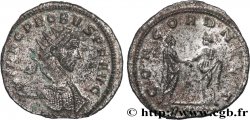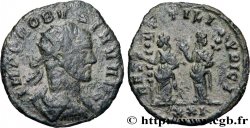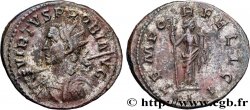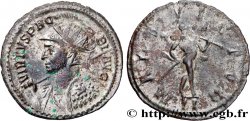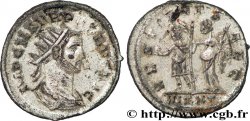Live auction - brm_394317 - PROBUS Aurelianus
You must signin and be an approved bidder to bid, LOGIN TO BID. Accounts are subject to approval and the approval process takes place within 48 hours. Do not wait until the day a sale closes to register. Clicking on "BID" constitutes acceptance of the terms of use of cgb.fr private live auctions.
Bids must be placed in whole Euro amounts only. The sale will start closing at the time stated on the item description; any bids received at the site after the closing time will not be executed. Transmission times may vary and bids could be rejected if you wait until the last second. For further information check the Live auction FAQ
All winning bids are subject to a 18% buyer’s fee.
All winning bids are subject to a 18% buyer’s fee.
| Estimate : | 2 200 € |
| Price : | no bid |
| Maximum bid : | no bid |
| End of the sale : | 28 June 2016 15:29:28 |
Type : Aurelianus
Date: fin 277 - début 278
Date: 277-278
Mint name / Town : Lyon
Metal : billon
Millesimal fineness : 50 ‰
Diameter : 22 mm
Orientation dies : 6 h.
Weight : 3,69 g.
Rarity : R3
Officine: 1re
Coments on the condition:
Exemplaire de qualité exceptionnelle pour ce type de monnayage. Portrait de toute beauté où tous les détails de la trabea et du buste consulaire sont bien visibles. Revers de haut relief. Jolie patine avec des reflets dorés
Catalogue references :
Predigree :
Cet exemplaire provient de la trouvaille n° 2, de MONNAIES XXVII, n° 37 (collection Daniel Compas), de MONNAIES 59, n° 537
Obverse
Obverse legend : IMP C M AVR PROBVS P F AVG.
Obverse description : Buste radié consulaire de Probus à gauche avec la trabea, tenant le scipio de la main droite et la mappa de la main gauche (H2).
Obverse translation : “Imperator Cæsar Marcus Aurelius Probus Pius Felix Augustus”, (L’empereur césar Marc Aurèle Probus pieux heureux auguste).
Reverse
Reverse legend : TEMPO-R FELICI/ -|-// I.
Reverse description : Felicitas (la Félicité) drapée, debout à droite, tenant un caducée long de la main droite et une corne d'abondance relevée de la gauche.
Reverse translation : “Temporum Felicitas”, (La Félicité du temps).
Commentary
Avec l’intégralité de son argenture. Le Docteur Bastien n’avait relevé que deux exemplaires dans son corpus en 1976 pour le numéro 205. Les deux exemplaires du Bastien n° 205 sont de mêmes coins, Ashmolean Museum d’Oxford, Bastien n° 205a, pl. XXV et exemplaire du Kunsthistorisches Museum de Vienne, collection Missong, n° 52.153, Bastien n° 205b, pl. XXV et que l’exemplaire de MONNAIES XXI, n° 3326. L’exemplaire est aussi de même coin de droit que l’exemplaire du British Museum, Bastien n° 202, pl. XXIV R/ SOLI INVICTO. Le style est aussi apparenté à l’aureus de la même émission, Bastien n° 201, pl. XXIV, cf. ROME II (couverture). Comme le fait remarquer Daniel Compas, “le buste H2 est un des plus rares du monnayage lyonnais de Probus. Celui-ci est le cinquième exemplaire connu avec ce buste” pour la cinquième émission. “Laurent Schmitt dans MONNAIES XXVII, n°37 avait cru voir une légende d’avers ponctuée et avait considéré que l’exemplaire était inédit et il l’avait numéroté 205(alpha)a qui est infirmé par notre exemplaire inédit de la deuxième officine 213(bêta) de même coin d’avers qui ne présente pas de ponctuation” d’après S. Estiot. C’est donc le troisième exemplaire publié pour le numéro 205 du Bastien. Cet exemplaire sera publié dans le Supplément III du Bastien, n° 205c.







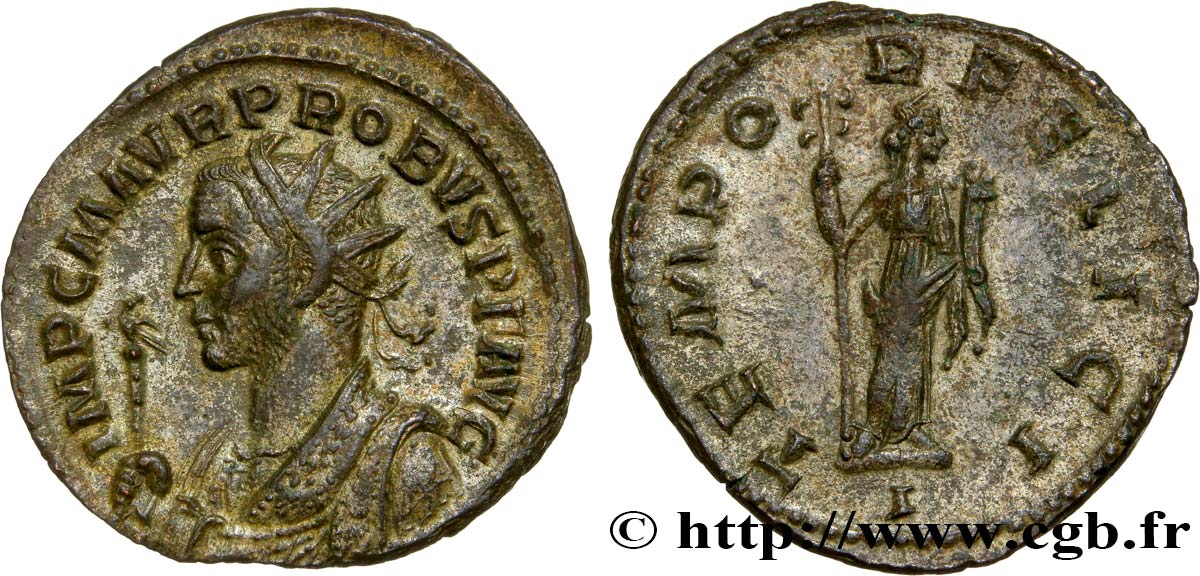
 Report a mistake
Report a mistake Print the page
Print the page Share my selection
Share my selection Ask a question
Ask a question Consign / sell
Consign / sell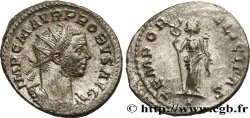
 Full data
Full data